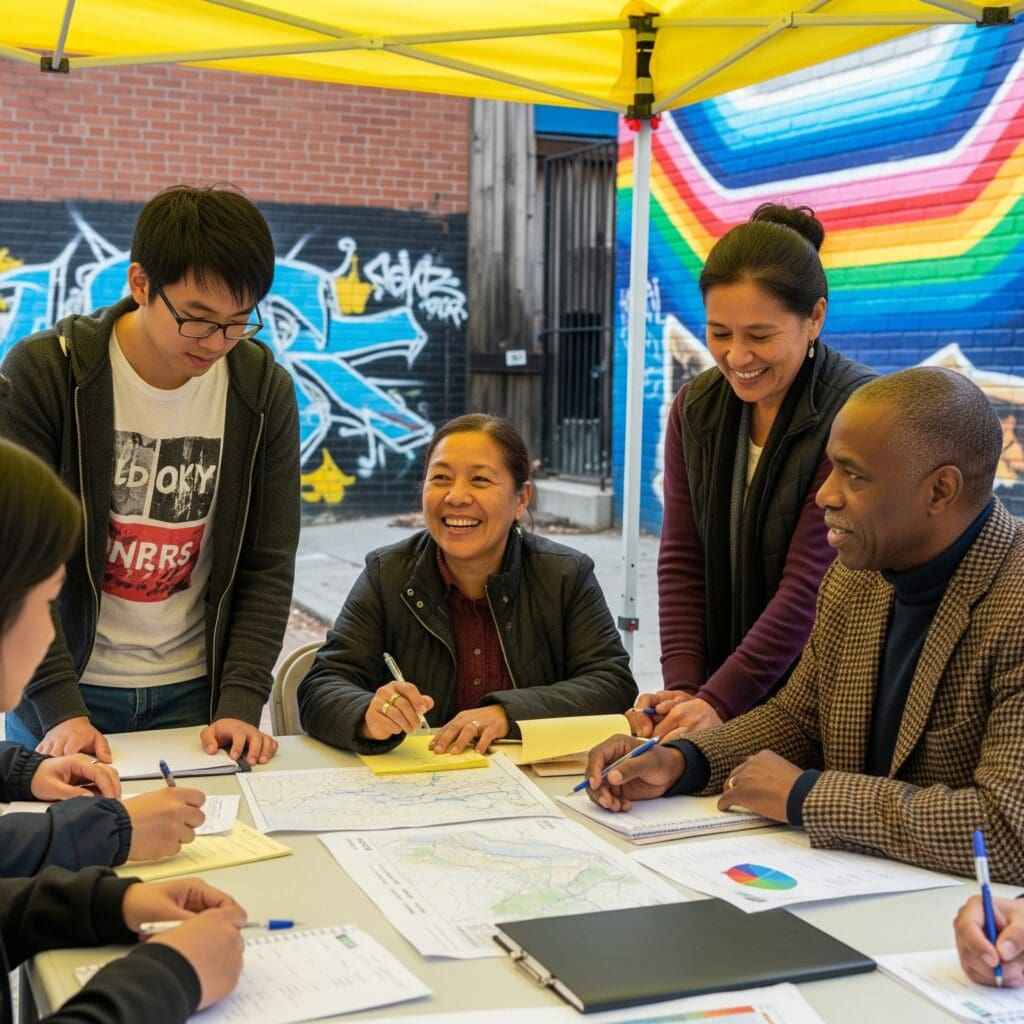Too often, health and social services are designed for communities without truly involving the people the services and systems impact. The result? Well-intentioned services and supports that miss the mark, fail to build trust, or struggle to create lasting impact.
But what if the people most affected by these service systems were also the ones shaping them?
This is where community-based research (CBR) comes in — a model that brings together those impacted most by an identified community concern, community agencies, and those gathering the information, as equal partners.
Equal partners to understand the current experiences in the service system, the system itself and context surrounding.
Equal partners to co-create solutions grounded in real experiences and local knowledge.
Equal partners to drive real change to better serve that community
CBR is a participatory approach driven by the community. It acts as a point-in-time pulse check for community issues or needs and uses multiple methods to gather and value diverse perspectives.
CBR ensures:
· the engagement is relevant to the community, having maximum impact
· the process is iterative to adjust approaches to where the community is at
· those engaged are protected and have trusting relationships with those engaging them
· diverse perspectives are gathered the provide deeper understanding
· sustainable approaches and partnerships are employed from the beginning of the project
So, why is CBR so powerful?
It builds trust
In communities with histories of marginalization or mistreatment by institutions, trust in health and social services can be low. By involving community members directly in CBR, agencies demonstrate respect, transparency, and a genuine commitment to listening — key steps in building long-term trust. CBR does this by shifting the involvement of the community along the Community Participation Spectrum from more passive to more active forms of engagement. This could include involving community members in advisory committee roles for the project, engagement planning and action planning; or having people with lived/living expertise (PWLLE) gather and validate information and experiences via peer-led interviews in the community.
It promotes equity
CBR shifts the balance of power. Instead of organizations dictating what’s best, it empowers communities to define their own needs and co-create solutions. The opportunity for more of a participatory approach promotes equity not only in outcomes, but in the processes. A foundation of the approach is a deep respect and value of the community’s contributions to the processes. If community members are involved in any aspect of the process, they should be properly compensated for their time. Additionally, if community members are involved in a role that requires particular skills (e.g., leading interviews), they should be provided with proper training to build their capacity and skill set for other opportunities in life.
It leads to richer data
Community members bring invaluable local knowledge and lived experience that enrich gathered information and interpretation. They often have insights that agencies may overlook. This ensures that the research is grounded in the community, rather than based on assumptions. It also provides that valued pulse check of community needs, what is working or not working, and potential priorities. For example, after engagement data is collected and analyzed, having PWLLE interpret and validate data will ensure the findings reflect the current community context and experiences.
It sparks impactful change driven by the community
CBR is action-oriented. Its goal is to make a tangible difference. And with the community involved, the findings from CBR are more likely to lead to practical, culturally appropriate, and sustainable interventions. Take the creation of a community drug strategy we supported in Chatham-Kent. CBR was foundational throughout the entire project. This included PWLLE collaborating in engagement planning, the interpretation and validation of engagement findings and strategy planning, and in-person peer-led interviews as a main engagement method. The result was a drug strategy that was truly informed and shaped by the community to better support those in the community who need it most. The strategy was passed unanimously by Chatham-Kent Municipal Council in 2024.
Community-based research is more than a methodology — it’s a mindset. One that values truth and a deeper understanding of community realities, issues and needs, relationships, and equity. In the health and social services sector, where the stakes are human lives and well-being, this approach isn’t just powerful — it’s essential. As we look toward more just and compassionate systems, Collective Results believes embracing CBR is a step forward in building health and social services that work with communities, not just for them.
Do you have an interest in CBR for your community but don’t know where to start? Collective Results has led CBR projects in communities across Ontario around complex health and social issues like mental health, housing and homelessness, and substance use harms.
If you’d like to talk about CBR in your community, don’t hesitate to reach out!

